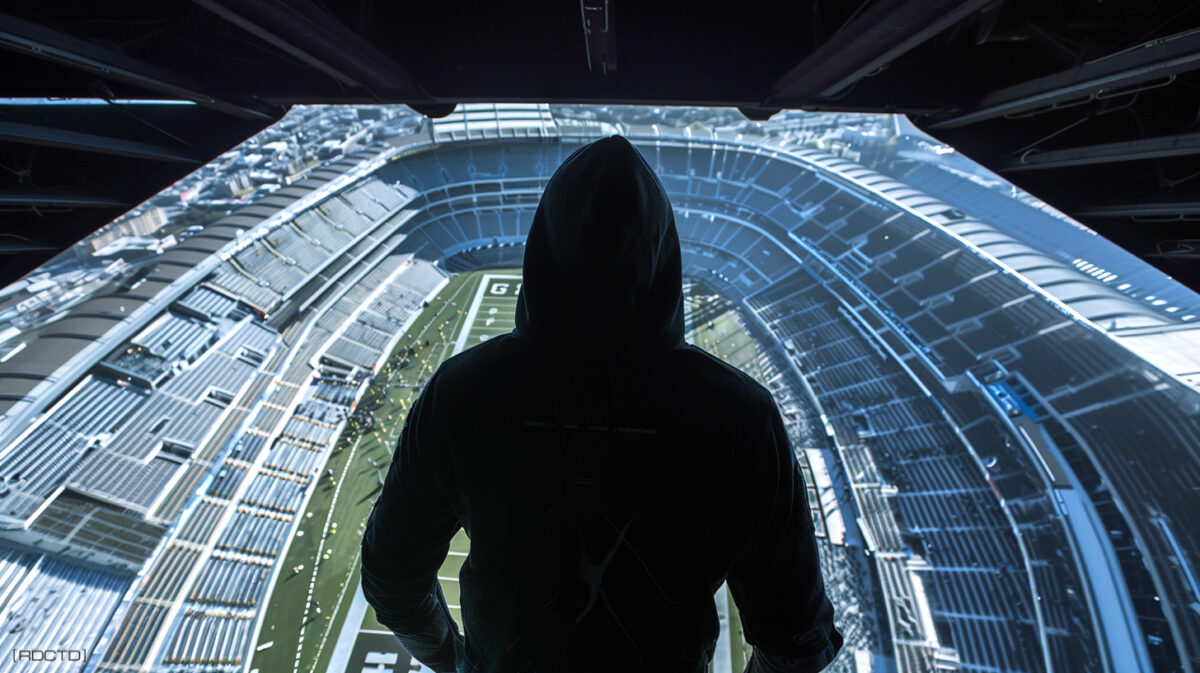 The covert operative guide to living a double life; framework and tradecraft to maintain dual identities without compromise – to operate securely while maintaining a believable and durable alternate identity.
The covert operative guide to living a double life; framework and tradecraft to maintain dual identities without compromise – to operate securely while maintaining a believable and durable alternate identity. ![]()
The ability to live multiple lives is a full-spectrum capability that requires planning, practice, and precision. Every element, from document backstopping to behavioral alignment, must be controlled. You need to move seamlessly between identities without hesitation, misstep, or emotional leakage.
A well-kept secret isn’t silence. It’s movement without a trace, memory without weight, and identity without anchor.
Operating under non-official cover (NOC) in a foreign environment or running clandestine activities at home in everyday life, your cover identity must be as seemingly real and solid as your true one.
![]()
![]()
This guide draws from the operational frameworks, psychological conditioning, and tradecraft used by CIA Non-official cover (NOC) operatives, who conduct intelligence missions without the legal protections of diplomatic status. NOCs must live full-time under fabricated identities, operating in hostile or denied environments where exposure leads to arrest, torture, or execution.
Every principle outlined, from legend creation to compartmentalization to behavioral, and exit planning, is distilled from field-proven methodologies used by these deep-cover operatives. Unlike traditional intelligence roles (officers), NOCs don’t rely on embassies, official backstopping, or overt affiliations – they survive entirely on the strength of their preparation, discipline, and ability to make their assumed identity indistinguishable from reality.
![]()
![]()

![]()
![]()
I. IDENTITY ENGINEERING
A cover identity (“legend”) in tradecraft is more than a fake name and forged papers. It’s a fully-formed, breathing identity that can withstand scrutiny from border agents, employers, hotel clerks, foreign intelligence services, and even long-term personal relationships. A weak legend gets peeled apart by professionals. A strong one becomes a suit of armor. There are several components you need to build and maintain a high-integrity legend.
⸻
A. Full-Stack Biography Construction
A good legend starts with a complete life history; realistic, detailed, and grounded in the region and culture in which you’re operating.
[Key Elements]
• Name: Must match region and culture. Avoid anything flashy or unique. If possible, pick one that blends into the middle of the demographic bell curve.
• Date of Birth & Place: These must match all documentation. Use a location that you can plausibly describe, ideally a place you’ve visited or studied thoroughly.
• Family Background: Flesh out parents, siblings, marital status. Decide whether they’re alive or dead, what they did/do for a living, and where they live.
• Education History: Include schools attended, years, degrees earned. Choose institutions that are obscure enough not to be double-checked casually but known well enough to be plausible.
• Employment Record: Include past jobs, roles, durations, and reasons for leaving. Have a ready-to-go explanation for every employment gap.
• Hobbies and Interests: These humanize your legend. Pick interests that can be talked about credibly but don’t require deep personal involvement.
![]()
*Instead of saying you’re into “classic Russian literature,” say you collect old cookbooks or attend Sunday farmer’s markets. Easy to explain, harder to challenge.
⸻
B. Document Integration (Hard and Soft Infrastructure)
Your story’s only as good as the evidence backing it up. Your legend requires a fully integrated paper and digital trail.
[Hard Documents]
• Passport(s): Must be high-quality forgeries or true state-issued documents through alias arrangements (this is a high-level capability).
• Driver’s License/ID Card: Must reflect your legend’s address and name. Never carry documents that link to your real identity when operating under cover.
• Work Badges/Access Cards: If part of your cover, these must be physically real, not digital mockups.
[Soft Infrastructure]
• Social Media Profiles: Operatives should create believable but low-key profiles – think LinkedIn, Facebook, Instagram. Ensure consistent details across platforms.
• Email Accounts: Create at least two. One for professional use, one for casual or personal. Use plausible email handles, nothing suspicious.
• Online Activity: Join a few relevant online forums or mailing lists to create a faint digital footprint. But don’t overshare or participate too frequently, ghosts draw suspicion.
![]()
*Age your online presence over time. Backdate posts. Use tools to simulate engagement (e.g., consistent timestamps, geotags). Think like a forensic investigator and build backward.
⸻
C. Social Engineering Alignment
A successful legend must be built to interface smoothly with real people in the environment you’re infiltrating.
[Cultural Fluency]
[Story Memory]
[Personality Tuning]
![]()
*You’re stopped at an airport. A customs officer chats with you while checking your papers. Can you speak convincingly for 10 minutes about your job, city, and daily life – without triggering red flags?
⸻
D. Behavioral Rehearsal
Once your legend is constructed and documented, you have to live it. Not occasionally, always, when operating.
[Training Methods]
• Field Role-Play: Practice interactions in safe zones. Order coffee under your cover name. Talk about your job casually with strangers. Log how it feels, how you’re perceived.
• Mirror Work: Practice telling your cover story aloud, watching for unnatural expressions or inconsistencies.
• Stress Testing: Simulate difficult situations; interviews, arguments, cross-examinations, while maintaining your legend.
⸻
E. Backstopping
Backstopping is the external validation system for your cover. It’s what separates a basic false identity from a professionally constructed legend.
[Verifiable Documents]
[Digital Footprint]
[Institutional Records]
[Human Support]
![]()
*Backstopping is what turns your fake life into a real one, at least on paper and screen. Redundancy is your safety net. It’s how you survive being questioned, flagged, or challenged without breaking character.
⸻
F. Mistake Prevention and Maintenance
Your legend will decay over time unless actively maintained. Also, the most dangerous moment is usually the slip you didn’t notice.
[Mistake Patterns]
• Using your real voice in voicemail greetings.
• Signing your real name by habit on forms.
• Forgetting a fabricated past detail during questioning.
[Maintenance]
• Keep a private legend reference file. Update it regularly with any modifications or rehearsed interactions.
• Cross-check all cover materials once a quarter.
• Keep a clean room or digital “sandbox”, for prepping and reviewing your legend materials away from real-world contamination.
⸻
Your legend is your armor, your shield, your mask. Done right, it lets you walk through customs, infiltrate foreign targets, build assets, or escape detention without raising suspicion. Done poorly, it draws heat like blood in the water.
Creating and maintaining a cover identity is not a one-time task, it’s an ongoing operation. It requires study, rehearsals, work, and constant refinement.
![]()
![]()

![]()
![]()
II. OPERATIONAL COMPARTMENTALIZATION
Compartmentalization is the firewall between your identities. It’s not just about keeping things separate, it’s about controlling access, flow of information, and physical behaviors so tightly that a mistake in one life can’t compromise the other.
Without true compartmentalization, your double life becomes a ticking bomb. One curious neighbor, one misplaced email, one unexpected phone call can bring both identities crashing down.
This section provides a deep-dive into the mechanics, psychology, and field protocols of operational compartmentalization, the second critical pillar of effective covert dual living.
⸻
A. Identity Segregation
At its core, compartmentalization means your two identities never overlap, a total separation of personalities.
[Key Principles]
• Different Names, Different Faces: Never allow people from one identity to know the name or appearance of the other. Use different photos on IDs, different hairstyles, glasses, facial hair, and clothing styles.
• Distinct Behavioral Signatures: Your posture, speech tempo, tone, and body language must shift between personas. Even your gait, gestures, and sense of humor should diverge.
• No Shared Details: Even harmless overlaps, like mentioning a vacation or favorite food in both lives, can be breadcrumbs for someone connecting the dots.
![]()
*If you’re ever in a position where someone from Life “A” could encounter you while operating as Life “B”, you’ve failed at compartmentalization.
⸻
B. Device and Communication Isolation
Every identity must have its own digital and communications ecosystem. Sharing devices, accounts, or even Wi-Fi connections is operational malpractice.
[Requirements]
• Separate Phones: Physically separate burner or encrypted devices. No dual-SIM convenience. Use entirely different service providers and area codes if possible.
• Unique Email Accounts: No account reuse, no shared passwords. Use alias-based emails for each life, hosted by different providers.
• Social Media Isolation: Operatives should never friend, follow, or engage across identities. IP addresses must never cross; use separate VPNs or air-gapped devices.
• Voice Protocol: Program yourself to answer each device in the correct voice and greeting. Nothing raises suspicion faster than calling “Tom” and hearing “This is Alex.”
[Tradecraft Tools]
⸻
C. Physical Segmentation of Environments
In ideal scenarios, each identity operates out of physically distinct spaces. If that’s not possible, strict physical zoning is required.
[Housing]
• Separate Residences: Best case – two apartments in different areas, both populated with appropriate props and documents.
• Dual-Zone Residences: If using a single location, divide rooms for each life. Use locked containers or hidden compartments for identity-specific items.
• Deconfliction Schedules: Operate each persona during distinct times of day or week to avoid overlap with neighbors, delivery personnel, or contacts.
[Props and Wardrobe]
• Maintain distinct wardrobes. If your legend requires formal dress and your real life is casual, don’t mix items.
• Accessories (watches, shoes, briefcases, even pens) should not cross identities. People notice details far more than you think.
![]()
*Never carry an ID, credit card, or object that doesn’t belong to the current identity. Accidental exposure is often fatal to an operation.
⸻
D. Mental Discipline and Persona Switching
Your mindset must match the identity you’re operating in, instantly and flawlessly. This requires mental conditioning and behavioral programming.
[Techniques]
[Practice Methods]
• Daily Rehearsals: Run through your switch protocol every morning, even if you’re not in the field.
• Self-Interrogation: Can you recount your legend’s last three weeks in detail? What’s their biggest current stressor? Who’s their dentist?
⸻
E. Social and Contact Management
Human contact is where compartmentalization often fails. Operatives must treat people like data; they belong in different silos, and should never meet or even know the others exist.
[Strategies]
• Unique Social Circles: Each identity should maintain completely separate networks; friends, associates, neighbors, online contacts.
• Staggered Social Schedules: Avoid creating a situation where people from different lives might show up at the same bar, gym, or event.
• Alias Communication Protocols: Use different slang, dialect, and behavioral traits when speaking with different contact groups. If someone from Life “A” were to overhear you talking to someone from Life “B”, it should sound like you’re a different person.
![]()
*The highest percentage of legend breaches in real operations comes from social overlap, either digital or physical.
⸻
F. Operational Logs and Control Systems
You can’t trust memory alone when managing multiple identities. Use systems to track and audit your double life.
[Logging Systems]
[Control Mechanisms]
⸻
G. Emergency Compartmentalization Protocols
When things go bad (failure contingencies should always be in place) you must be able to instantly sever one identity without exposing the other.
[Preparedness]
• Drop Kits: Each identity should have a separate go-bag with documents, clothes, funds, and an exit strategy.
• Dead Drops or Cloud Exfil Points: Maintain emergency backups of both identities that can be retrieved in isolation.
• Triage Protocol: Decide in advance which identity is more expendable. You may need to “burn” one to save the other.
![]()
*If you’re pulled into questioning under your cover identity, nothing you say should even hint that another version of you exists.
⸻
Operational compartmentalization is for building deliberate firebreaks between lives, such that no amount of external pressure can cause a collapse. It’s one of the hardest disciplines in covert operations because it’s relentless. It requires a daily commitment to structure, discipline, and vigilance.
![]()
![]()

![]()
![]()
III. BEHAVIORAL ALIGNMENT
You can have the perfect cover story and flawless documentation, but if your behavior doesn’t match your identity, it’s all for nothing. People are hardwired to sense incongruence; your posture, tone, micro-expressions, and hesitation will betray you before your passport does.
Behavioral alignment is about ensuring your physical and social presence matches your assumed identity in a way that withstands scrutiny, from customs officers to counterintelligence agents to random bystanders.
The art of “acting natural” isn’t about theatrical performance, it’s about behavioral calibration. Operatives must become masters of social mimicry, controlled authenticity, and environmental blending.
⸻
A. Baseline Behavior Mapping
Before you can act natural, you need to define what normal looks like in the environment you’re entering. This is your baseline.
[Environmental Baseline]
• Observe locals in your area of operations. Note average energy levels, personal space norms, tone of voice, and eye contact.
• In a high-trust culture (e.g., Scandinavia), people expect openness and calm confidence. In a low-trust culture (e.g., parts of Eastern Europe), they’re attuned to skepticism and subtle behavioral cues.
• Dress, body language, and tempo should match the baseline. You don’t want to be the only person moving quickly in a slow, quiet town or vice versa.
[Professional Baseline]
• If your cover is a corporate consultant, you need to reflect the behavior expected in that role; measured confidence, articulate speech, professional but slightly distant demeanor.
• A café barista cover? Relaxed body language, constant motion, casual tone.
• Study how your cover’s professional peers speak, dress, and behave under pressure.
![]()
*Spend one full day in your target role’s environment without interacting. Just observe. Take notes. You’re not studying behavior, you’re calibrating your own.
⸻
B. Behavioral Signature Engineering
Every person has a unique “behavioral signature”; the subconscious way they move, talk, and respond. Your cover identity needs its own.
[Key Elements to Define]
[Implementation]
![]()
*An operative posing as a seasoned businessman who shows obvious signs of nervousness when questioned at customs immediately becomes suspect, even if his papers are perfect.
⸻
C. Stress Response Conditioning
The ultimate test of behavioral alignment is how you hold your cover under stress. Most legends collapse not because of bad documentation, but because the operative’s behavior under pressure doesn’t fit their cover identity.
[Techniques]
• Simulated Stress Drills: Practice interviews with aggressive questioners. Conduct role-play under time pressure or noise. Add physical discomfort (heat, noise, hunger) to simulate field conditions.
• Breath Control and Composure: Learn box breathing or tactical breathing to stay level. A calm, rhythmic breath pattern under questioning will help preserve natural behavior.
• Emotional Pre-scripting: Decide in advance how your cover identity reacts emotionally. Do they get flustered, dismissive, or overly cooperative under pressure?
![]()
*Your real stress responses, like touching your face when lying or stuttering when nervous, must be retrained. Record them, identify them, and neutralize them through repetition and behavioral overwrite.
⸻
D. Controlled Vulnerability (Credible Imperfection)
People trust others who show authentic vulnerability. If you appear too polished, too rehearsed, or too perfect, people instinctively distrust you. This is where controlled vulnerability becomes a tool.
[Examples]
• Admit Small Flaws: “I always forget where I parked,” or “I’m terrible with names.” These are harmless but humanizing.
• Acknowledge Nervousness in Context: “Customs always makes me nervous, even though I know I’ve got nothing to hide.”
• Express Soft Emotion: “My daughter’s starting school next week, I’m more nervous than she is.” (Even if you don’t have one.)
![]()
*Don’t fake dramatic emotions. Overacting grief, anger, or joy risks exposure. Keep emotional displays subtle and culturally appropriate.
⸻
E. Situational Behavior Matching
Your behavior must evolve with the context. If you act the same way in every setting, people will pick up on the mismatch.
[Adjust To]
• Formality Level: Be more composed in a government office, more casual at a street market.
• Power Dynamics: Speak differently to a hotel clerk than to an airport immigration officer or potential asset.
• Time and Place: You don’t crack jokes in a courtroom. You don’t behave uptight at a beach bar. Your environment sets the tempo.
![]()
*Failing to adjust behavior during transitions. For example, walking out of a tense customs checkpoint and immediately acting relaxed before you’ve cleared the cameras, that’s suspicious.
⸻
F. Voice Discipline and Speech Calibration
Voice is one of the most immediate identifiers. Your cadence, accent, volume, and word choice must match your cover.
[Voice Work Includes]
• Accent Training: If your legend calls for it, get formal accent coaching. Never do an accent you can’t hold under stress.
• Cadence and Tone: Military background operatives often speak too precisely or formally. Loosen it. Add fillers, pauses, and informal phrasing as needed.
• Volume Awareness: Match the speaking volume of the environment. Loudness is culture-specific, what’s normal in New York sounds aggressive in Tokyo.
[Practice]
• Record casual conversations in your target identity. Play them back at double speed and listen for robotic phrasing or unnatural structure.
• Practice talking while walking, eating, and multitasking, situational fluidity is the goal.
⸻
G. Behavioral Anchoring Rituals
Rituals are powerful tools for mentally inhabiting your legend. They help you transition between identities and keep behavioral alignment tight.
[Ritual Examples]
![]()
*Use these before entering high-risk environments or prolonged interactions.
⸻
If your behavior doesn’t align with your identity, no amount of documentation, legend-building, or counter-surveillance will save you. People may not consciously detect the inconsistency, but they will feel it, and in this line of work, gut feelings trigger background checks, surveillance, and interrogation.
To live a double life successfully, you must learn to become the person you’re pretending to be, not just in name or story, but in behavior, tone, movement, and response. You must embody the character until you can’t be separated from it.
![]()
![]()

![]()
![]()
IV. PLAUSIBLE DENIABILITY
In covert operations, plausible deniability is your lifeline. It’s the difference between walking away from a compromised situation and being detained, interrogated, or worse. When you live a double life, mistakes will happen.
People will grow suspicious. Something will eventually not add up. Your survival depends on your ability to explain away suspicion with logic, charm, and realism – without ever revealing the truth.
Plausible deniability isn’t about deception. It’s about believability. Your lies must be indistinguishable from reality – not just factually and situationally, but behaviorally and emotionally.
⸻
A. Core Principle: Believability Over Truth
The concept of plausible deniability hinges on this single truth: it doesn’t matter what’s real, it matters what people are willing to accept as real. Plausible deniability gives you an off-ramp when questioned. It gives your handlers, your allies, or even your cover identity a way to rationalize your behavior without suspecting espionage or covert intent.
⸻
B. Types of Deniability You Must Prepare
There are several categories of deniability a covert operative must build into their double life.
[Identity Deniability]
You must be able to explain inconsistencies or gaps in your cover identity without triggering deeper investigation.
• Example: If someone questions a gap in your employment history, you say, “I was freelancing off the grid for a year, did some travel, nothing special.” This explains away missing digital footprint or tax records.
• Tools: Backup stories for every weak point in your legend. Always pre-identify what parts of your cover are most fragile.
[Presence Deniability]
If someone asks why you were in a restricted or sensitive location, you must have a believable excuse.
• Example: “I got lost looking for the train station, Google Maps sent me the wrong way.”
• Pro Tip: People believe incompetence or confusion more easily than calculated intent. Use that.
[Action Deniability]
When caught doing something suspicious (e.g., taking photos of infrastructure, loitering near a facility), your actions must be reframeable.
• Example: “I’m a hobbyist photographer, this building’s architecture caught my eye.”
• Supplement: Have a matching social media account or photo roll filled with architectural shots to back the story.
[Associative Deniability]
If someone connects you to a known operative or person of interest, you need a way to explain that connection innocuously.
• Example: “He used to date my sister. I haven’t spoken to him in years.”
⸻
C. Pre-Built Alibis and Alternate Explanations
The best way to preserve plausible deniability is to pre-build alibis and anticipate scrutiny points before they come up.
[Process]
• Step 1: Identify Vulnerable Areas in your legend – gaps in the timeline, weak credentials, unverifiable travel, etc.
• Step 2: Develop Pre-Texts for each – Not lies pulled from thin air, but realistic, casual explanations.
• Step 3: Practice Delivery – Rehearse each aloud. The goal is natural, offhand, forgettable, not defensive or over-explained.
![]()
*The less dramatic the excuse, the more believable. People expect normal, not cinematic.
⸻
D. Mastering “Soft Lies” and Emotional Consistency
The most effective lies are those that feel emotionally consistent with the person you’re pretending to be.
[Soft Lie Strategy]
*You say you were visiting a friend in Prague. The truth is you were meeting an asset. The soft lie: “We went to this little jazz bar off the main square… can’t remember the name. The sax player was awful.” The fake memory gains realism through detail, imprecision, and emotion.
⸻
E. Leveraging Human Biases to Your Advantage
Most people are not investigators. They’re lazy thinkers governed by bias. Learn to exploit these cognitive shortcuts.
[Biases You Can Use]
*When a customs officer sees a well-dressed, middle-aged woman with a tourist story, they’re far more likely to wave her through, even if she’s smuggling intel. Charm + fitting the mental model = bypass.
⸻
Plausible deniability is the buffer zone between suspicion and certainty. It’s not about fooling everyone forever, it’s about making people hesitate just long enough for you to exit the situation clean. It’s the art of turning exposure into ambiguity, and ambiguity into escape.
![]()
![]()

![]()
![]()
V. OPSEC
Surveillance, whether technical, physical, or digital, is the primary method by which your double life will be discovered. You can build a perfect cover and stay emotionally controlled, but if you’re under surveillance and unaware of it, you’re compromised before you realize what went wrong.
Every covert operative must possess constant, practiced surveillance awareness, and know how to apply countermeasures without tipping their hand. The goal is not always to break contact or confront surveillance – it’s to detect it early, stay one step ahead, and manage your exposure deliberately.
⸻
A. Understand the Purpose and Types of Surveillance
Before you can defend against surveillance, you must understand what kind you’re likely to face. Surveillance is usually tailored to its objective; gathering intelligence, mapping your network, catching you in the act, or setting up for detention.
[Surveillance Objectives]
• Pattern of Life (PoL): Building a complete picture of your habits, contacts, and routines.
• Association Mapping: Identifying your connections and handlers.
• Trigger Surveillance: Waiting for you to meet an asset, retrieve a dead drop, or do something operational.
• Confirmatory: Proving that you are not who you claim to be.
[Primary Types]
• Fixed Surveillance: Cameras, observers in buildings, parked cars.
• Mobile Surveillance: Foot, vehicle, or drone teams tracking you in real time.
• Technical Surveillance: Audio bugs, tracking devices, phone/data monitoring, facial recognition.
• Cyber Surveillance: Browser fingerprinting, Wi-Fi triangulation, malware, geotagged social content.
![]()
*You must assume at all times that at least one of these forms is active, particularly in hostile or counterintelligence-heavy environments.
⸻
B. Developing Situational Awareness: The Foundation of Detection
To detect surveillance, you must develop real situational awareness – not just watching for tails, but being mentally present in every environment you enter.
[Techniques]
[What to Watch For]
⸻
C. Surveillance Detection Routes (SDRs)
One of the most effective ways to confirm surveillance is to run a Surveillance Detection Route – a pre-planned sequence of movements designed to flush out or confirm a tail.
[Basic Principles of an SDR]
• Must include choke points, loops, unexpected turns, and dead spaces.
• Should include a location where you can observe your own tail (e.g., using a shop window, mirror, or sudden turn into a reflective surface).
• Should not resemble obvious counter-surveillance unless you’re prepared to burn the cover.
[SDR Process (Urban) Type]
![]()
*If surveillance confirms that you’re running an SDR, you’ve exposed yourself. Run SDRs subtly or when you’re reasonably sure you’re already under tail.
⸻
D. Counter-Surveillance Techniques
Once you’ve detected or suspect surveillance, your goal shifts from detection to disruption, deception, or evasion – without tipping your hand.
[Disruption]
[Deception]
[Evasion]
⸻
E. Technical Surveillance Countermeasures (TSCM)
In the modern operational environment, the biggest threat is often invisible. Bugs, cameras, GPS trackers, and software-based tracking are common, especially in counterintelligence-heavy states.
[Counter-Device Practices]
[Digital Surveillance Defense]
![]()
*Turning off your phone isn’t enough, many phones continue to ping cell towers unless completely powered down or isolated.
⸻
F. Behavioral Counter-Surveillance
Your own behavior must not betray your awareness. The moment you visibly look for surveillance, you change the dynamic. Professional surveillance teams are trained to detect subject awareness.
[Maintain]
![]()
*Behaviorally, you must always appear like someone who has nothing to hide, even when you’re hiding everything.
⸻
G. Surveillance in Foreign or Hostile Environments
In non-permissive environments such as hostile governments, denied areas, you must assume you’re always under some form of surveillance.
[Adjustments]
• Every Room is Bugged: Never speak operational details in hotels, taxis, or cafes.
• Every Local May Be Watching: Assume you’re being socially surveilled via local civilians and informants.
• Every Movement is Tracked: Minimize digital signatures. Use cash. Avoid public Wi-Fi. Don’t use fitness apps, rideshares, or map lookups unless on secure devices.
⸻
The operative who sees first survives longest. It’s noticing the man on the park bench who hasn’t moved in 45 minutes, the van that’s always nearby, the hotel room that looks just slightly different every time you return. It’s about staying alert, not alarmed. It’s about making them watch the wrong thing, at the wrong time, in the wrong place, until you’re already gone.
![]()
![]()

![]()
![]()
VI. PSYCHOLOGICAL MANAGEMENT
Psychological management is the hidden load-bearing structure of a double life. Living under a fabricated identity, often for months or years at a time, while conducting covert operations requires more than external skill.
It demands internal discipline, emotional resilience, and deliberate mental conditioning. The body may act, the legend may speak, but if the mind breaks down, everything collapses.
Most failed operations don’t fall apart because of bad documents or surveillance. They fall apart because an operative starts believing the wrong parts of their own legend, burns out from emotional fragmentation, or makes an uncharacteristic mistake under stress. The longer you live a double life, the more stress builds. Ignore it, and it will destroy you.
⸻
A. Compartmentalization of the Self
Just as you separate your real and cover identities operationally, you must separate them psychologically. You cannot let emotions, memories, or loyalties from one side influence the other.
[Techniques]
• Cognitive Boundaries: Treat each identity like a psychological room with a locked door. When you’re “in character,” you must block thoughts and feelings tied to your real life.
• Emotional Trigger Control: Learn your triggers; songs, places, dates, people, and manage your exposure to them while under cover. Emotional leakage leads to irrational behavior.
• Behavioral Rituals: Develop a repeatable routine for transitioning in and out of each identity. This could be changing clothes, reviewing a legend binder, or reciting a memory script.
![]()
*It’s not enough to “act” like someone else. You have to become them when required, and then leave them behind, fully.
⸻
B. Relationship Management and Isolation Control
Forming close relationships while undercover is a trap. Emotional entanglement weakens your objectivity, limits your mobility, and risks exposure through human error.
[Operative Doctrine]
[Isolation Management]
[Counter Isolation]
![]()
*Many operatives crack not from torture or capture, but from silence and emotional starvation.
⸻
C. Psychological Recovery and Reintegration
Every double life has an end. Whether the mission concludes, the cover is burned, or you’re pulled out, you’ll return to your real self. Reintegration is a delicate process, and most mental damage is done after the field.
[Post-Operation Recovery Process]
• Step 1: Physical Reset – Sleep, nutrition, and solitude come first. Rebuild biological resilience before psychological processing.
• Step 2: Deconstruct the Cover – Remove props, avoid stimuli associated with the legend, and consciously shut down its behavior patterns.
• Step 3: Reinforce Your Identity – Engage with your real life, your home, family, values. Remind yourself that the mask is gone.
• Step 4: Talk to Someone – A handler, trusted contact, or trained psych support. You can’t decompress alone forever.
![]()
*Without reintegration, operatives tend to drift, numb out, or seek chaos elsewhere; drugs, violence, adrenaline, self-destruction. Reintegration isn’t weakness. It’s the return to control.
⸻
Living a double life demands more than external discipline, it demands internal mastery. You’re not just pretending to be someone else; you’re actively suppressing part of who you are, day after day, in environments designed to break you. Operatives don’t just survive this, they train for it. They build mental fortresses from routine, self-knowledge, emotional boundaries, and cold, practiced control.
![]()
![]()

![]()
![]()
VII. EXIT STRATEGY
An effective covert operation doesn’t end when the mission is complete. It ends when the operative extracts cleanly, burns or severs all operational ties, and safely returns to either another identity or their real self. Without a viable exit strategy, even a successful operation can become a fatal trap.
An exit is not just an escape – it’s a controlled disappearance, a methodical severing of connections, data, and presence. Ending a legend, evading surveillance, or escaping from a blown cover, your exit plan must be pre-built, flexible, and actionable under duress.
⸻
A. Understand the Exit Types: Strategic vs. Emergency
Not all exits are created equal. Know what kind you’re preparing for.
[Strategic Exit]
• Pre-planned, deliberate, and often scheduled.
• Used when a cover identity is no longer needed, an op concludes, or a rotation ends.
• Allows for cleanup, asset handoffs, and full withdrawal.
[Emergency Exit]
• Initiated under duress; cover blown, surveillance detected, or hostile action imminent.
• Prioritizes speed, concealment, and survival.
• May require abandoning most of the cover’s infrastructure.
![]()
*Every operational identity must have both a strategic and emergency exit plan, even if you think you’ll never need them.
⸻
B. Pre-Mission Exit Planning
Begin with the end. Exit planning starts before the operation does.
[Key Components to Prepare]
• Exfiltration Routes: Multiple physical routes out of the area; vehicle, foot, air, water. Include low-profile escape paths; service corridors, underground tunnels, utility roads.
• Go-Bags and Cache Sites: Each cover identity needs a go-bag with fake IDs, local currency, burner phone, clean clothing, and basic survival gear. Stash at safehouses or dead-drop locations known only to you.
• Exfil ID Kits: A backup legend with supporting documents. If your main cover is compromised, you must be able to “become” someone else within minutes.
• Financial Disengagement Plan: Have exit funds stored outside local banking systems. Use cryptocurrency, hard cash, or unlinked digital accounts. Pre-identify fallback payment methods (preloaded cards, third-party intermediaries).
• Exit Comms Protocol: A secure, pre-arranged method to notify handlers or allied assets of extraction status without exposing the op.
⸻
C. Clean Exit: Breaking the Identity Trail
Before you vanish, your legend must evaporate behind you. A clean exit makes it harder to trace, backstop, or investigate the identity you just abandoned.
[Tasks for a Clean Exit]
• Destroy or Sanitize Devices: Wipe all phones, laptops, external drives. Remove or physically destroy SIM cards and Wi-Fi chips.
• Sever Digital Presence: Delete or orphan social media accounts. Erase email trails, cloud data, and browsing history. Do not just deactivate, obliterate.
• Remove Physical Traces: Wipe down living spaces, vehicles, and commonly used objects. Collect all personal effects. Use gloves and sterilization techniques to remove fingerprints and DNA traces.
• Dissolve Social Ties: Fade out relationships naturally where possible. Don’t make a dramatic exit, just become “busy” or “reassigned.” In emergency exits, use pre-written messages (if appropriate) that explain sudden absence in benign terms: family emergency, overseas job, etc.
⸻
D. Emergency Extraction Protocols
When things go loud, you need a rapid, rehearsed process to disengage and disappear.
[Immediate Steps]
⸻
E. Post-Exit Risk Management
Even after escape, you’re not safe until you’ve neutralized investigation trails and reestablished a secure operational baseline.
[Debrief and Audit]
• Conduct a full timeline audit of everything the burned identity did. What might be traced? Who might talk?
• Identify anyone you interacted with who could compromise you, consider soft silencing (disinformation, ghosting, bribery) as needed.
[Behavioral Reset]
• Recalibrate your mindset. Emotional adrenaline crashes after an emergency exit can cause recklessness.
• Return to strict routines, physical training, sleep discipline, operational hygiene.
[Handler Debrief]
• Debrief to a trusted handler face-to-face, if possible. Include all missed signals, errors, and contingency failures for analysis.
⸻
F. Legend Rebirth or Reintegration
[Choices After Exit]
• Build a new cover, assuming another role and beginning the cycle again.
• Or reintegrate into your real identity and stand down from active cover work.
[Legend Rebirth (New Identity Setup)]
• Begin at a new location. Change languages, regions, professions.
• Use lessons learned from previous identity weaknesses to strengthen the next.
[Reintegration]
• Engage in structured decompression.
• Reconnect with original support network.
• Undergo psychological processing. Never transition directly from field work to civilian life without debrief and decompression.
⸻
Exit planning is not just a contingency, it’s part of the core operational lifecycle. Every move you make under cover must have an escape hatch, a fail-safe, and a path to disappear without noise. The most dangerous operative isn’t the one who can enter anywhere. It’s the one who can enter, complete the mission, vanish without a trace, and never be tied to what happened.
![]()
![]()
Living a double life as or like a covert operative is a lifestyle that demands relentless attention to detail, absolute discipline, and emotional resilience. As a professional or for personal reasons, success comes down to preparation, consistency, and the ability to become who you need to be, on command.
![]()
// You don’t disappear by hiding, you disappear by blending so well they never saw you to begin with.
[INTEL : Staging Your Own Death and Vanishing]
[TAG : How to Live a Double Life]
![[RDCTD]](https://rdctd.pro/wp-content/uploads/RDCTD-Covert-Operative-Tradecraft-Guide-LOGO-tk.png)
![[RDCTD]](https://rdctd.pro/wp-content/uploads/RDCTD-Covert-Operative-Tradecraft-Guide-LOGO-mobile.png)

